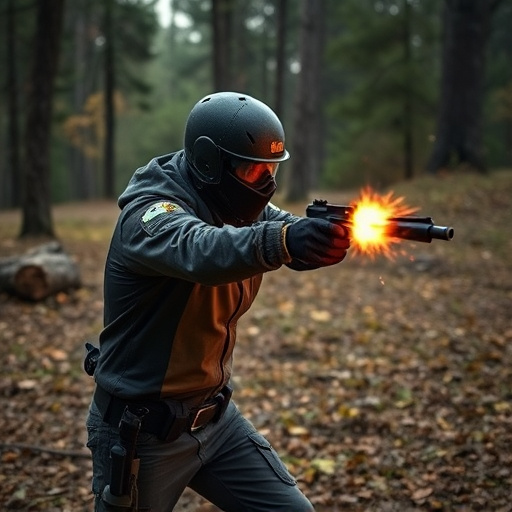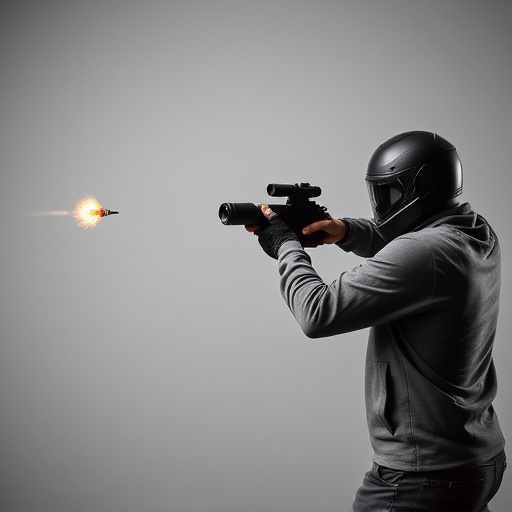Tasers (Electronic Control Devices) and traditional stun guns offer non-lethal force options, but differ in operation: Tasers use probes to deliver electric shocks, while stun guns create electrical arcs. For personal defense, buying stun guns that are easy to carry and use is crucial for peace of mind and effectiveness. Stun guns' simplicity and portability make them appealing choices, despite Tasers' precise control over applied force. Understanding these differences aids informed decisions for self-defense tools.
In today’s world, self-defense options like Tasers and stun guns offer non-lethal force alternatives. Understanding these devices is crucial for those seeking to protect themselves. This article delves into the distinctions between Tasers and stun guns, focusing on their unique features and ease of use. If you’re considering buying a stun gun known for its portability and handling, this guide provides insights to help you make an informed decision. Explore these tools’ capabilities and choose wisely based on your needs.
- Understanding Tasers: A Non-lethal Force Option
- Stun Guns: Carrying and Use Ease Explained
- Key Differences Between Tasers and Stun Guns
Understanding Tasers: A Non-lethal Force Option

Tasers, officially known as Electronic Control Devices (ECDs), have revolutionized non-lethal force options for law enforcement and personal defense. These tools use electrical current to disrupt muscle control, causing temporary immobilization without the risk of permanent harm. Understanding Tasers is crucial when considering self-defense options, especially given their growing availability for civilians looking to buy stun guns that are easy to carry and use.
Unlike stun guns that rely on high voltage but low amperage to shock the nervous system, Tasers fire small probes connected to wires that deliver a powerful electric current. This method ensures precise control over the level of force applied, making Tasers less likely to cause serious injury or even death. For individuals seeking effective personal protection without lethal consequences, understanding Tasers and their operational differences from stun guns can be a significant step towards making an informed decision.
Stun Guns: Carrying and Use Ease Explained

Stun guns, also known as electroshock weapons, are designed to incapacitate individuals through an electric current, temporarily disrupting their muscular control. When it comes to carrying and using stun guns, ease of use is a key factor. Many modern models are compact and lightweight, making them easy to conceal on your person or in a bag. This portability allows users to have peace of mind knowing they can protect themselves almost anywhere.
The simplicity of operation is another advantage. Stun guns typically require just a simple press of a trigger to deploy the electric shock. This straightforward mechanism ensures that even individuals without prior training can use them effectively in self-defense situations. Buying stun guns with these features guarantees users can easily carry and use their devices for personal safety, providing an extra layer of security in uncertain environments.
Key Differences Between Tasers and Stun Guns

When considering self-defense options, understanding the key differences between Tasers and stun guns is essential for making an informed choice. While both devices serve as non-lethal force tools, their mechanisms and effects vary significantly. Tasers, also known as electroshock weapons, fire two thin probes connected to wires that deliver a high-voltage, low-current electric shock to immobilize the target. This technology temporarily disrupts muscle control, causing the individual to fall to the ground and remain incapacitated for several minutes.
Stun guns, on the other hand, use electrical energy to create a powerful arc of electricity between two prongs or electrodes. Unlike Tasers that require direct contact with the target, stun guns can be used from a distance, making them more versatile in certain situations. Stun guns are designed to override the body’s natural pain receptors and cause severe discomfort or muscle spasms, leading to temporary disorientation and immobilization. Key differences also lie in their ease of use; stun guns are generally considered more straightforward to operate, which is a crucial factor for those looking to buy stun guns that are easy to carry and use as a personal defense tool.
In comparing tasers and stun guns, understanding their unique characteristics is key. While both offer non-lethal force options for self-defense, stun guns stand out for their ease of carrying and use, making them a popular choice for individuals seeking effective personal safety tools. When considering purchases, look for stun guns designed with ergonomic designs and intuitive activation mechanisms to ensure you’re prepared when needed.
